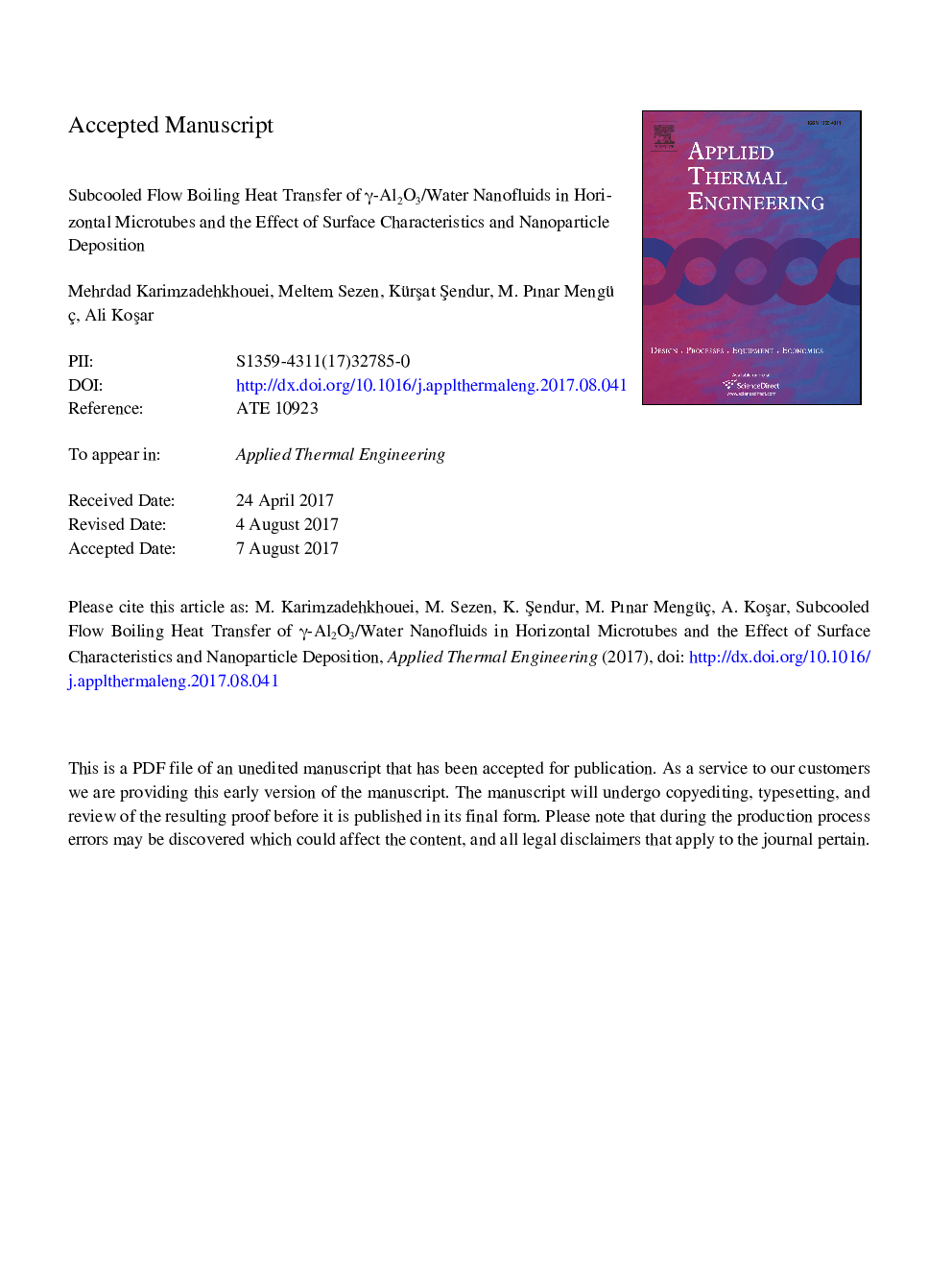| Article ID | Journal | Published Year | Pages | File Type |
|---|---|---|---|---|
| 4990741 | Applied Thermal Engineering | 2017 | 38 Pages |
Abstract
In this study, subcooled flow boiling heat transfer characteristics of nanofluids were investigated at micro scale. For this purpose, the effect of γ-Al2O3 (gamma-alumina) nanoparticles with an average solid diameter of 20 nm was considered. In the experiments, various mass fractions were considered in horizontal smooth stainless steel microtubes with inner and outer diameters of â¼502 µm and â¼717 µm, respectively, at mass fluxes of 1200 and 3400 kg mâ2 sâ1. Nanoparticles were added to distilled water (base fluid) at five mass fractions (low mass fractions 0.05 wt% and 0.2 wt%; high mass fractions 0.5 wt%, 1 wt% and 1.5 wt%). According to our results, subcooled flow boiling heat transfer coefficients for nanofluids with low mass fractions were nearly the same as those of the pure water. However, heat transfer deteriorated for nanofluids with high mass fractions. Observations of dynamic light scattering measurements for low and high mass fractions before and after the experiments revealed that agglomeration of nanoparticles is an important parameter in deterioration of heat transfer at higher concentrations. Besides, Scanning Electron Microscopy images of microtube inner surfaces showed that deposition of nanoparticles and agglomerated nanoparticles on the inner surface of the microtubes also contributed to the heat transfer deterioration at high mass fractions. Generally, the deterioration in heat transfer beyond a specific mass fraction value was linked to the disturbance in the stability of suspended nanoparticles and deposition of nanoparticles upon boiling.
Related Topics
Physical Sciences and Engineering
Chemical Engineering
Fluid Flow and Transfer Processes
Authors
Mehrdad Karimzadehkhouei, Meltem Sezen, KürÅat Åendur, M. Pınar Mengüç, Ali KoÅar,
